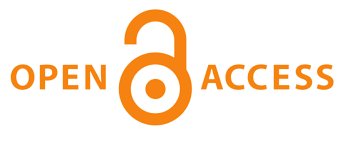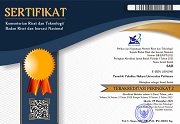Traditional Community Participation Model in Conflict Resolution among Two Mining Companies
 ), Henry Sitorus(2), Marlon Sihombing(3), Arifana Arifana(4), Safran Efendi Pasaribu(5)
), Henry Sitorus(2), Marlon Sihombing(3), Arifana Arifana(4), Safran Efendi Pasaribu(5)
(1) Faculty of Social and Political Sciences, Universitas Muhammadyah Tapanuli Selatan, Padang Sidimpuan, Indonesia

(2) Faculty of Vocational Education, Universitas Sumatra Utara, Medan, Indonesia
(3) Faculty of Social and Political Sciences, Universitas Sumatra Utara, Medan, Indonesia
(4) Faculty of Social and Political Sciences, Universitas Muhammadyah Tapanuli Selatan, Padang Sidimpuan, Indonesia

(5) Faculty of Social and Political Sciences, Universitas Muhammadyah Tapanuli Selatan, Padang Sidimpuan, Indonesia

 Corresponding Author
Corresponding Author
Abstract
Introduction: Mining operations in North Sumatera Province have generated both economic opportunities and socio-environmental challenges for surrounding traditional communities. The coexistence of PT. Agincourt Resources in Batangtoru and PT. Sorikmas Mining in Naga Juang has triggered land disputes, environmental degradation, and social polarization, reflecting the tension between corporate expansion and the preservation of customary (adat) values.
Purposes of the Research: This study aims to map and classify sources of social conflict between mining companies and local adat communities, examine the dynamics of traditional institutions, and develop a participatory conflict resolution model that integrates local wisdom and community empowerment.
Methods of the Research: Using a mixed-method design, this research combines quantitative surveys with qualitative approaches, including in-depth interviews, focus group discussions, and participant observation. Data were analyzed using parametric statistics and qualitative matrix analysis to identify socio-cultural dynamics, conflict patterns, and the institutional role of adat in mediating disputes.
Results of the Research: The findings show that mining activities have disrupted social cohesion and traditional governance structures, particularly regarding ulayat (customary) land rights. Nonetheless, the study introduces a Traditional Community Participation Model emphasizing adat leaders as mediators in conflict resolution. This model reinforces social capital, restores trust, and enhances collaboration between companies, communities, and government institutions. The research offers a novel integrative framework linking customary institutions with sustainable conflict management and responsible mining governance in Indonesia.Keywords
DOI
10.47268/sasi.v31i4.3408
Published
2025-11-17
How To Cite
@article{SASI3408,
author = {Nurhamidah Gajah and Henry Sitorus and Marlon Sihombing and Arifana Arifana and Safran Pasaribu},
title = {Traditional Community Participation Model in Conflict Resolution among Two Mining Companies},
journal = {SASI},
volume = {31},
number = {4},
year = {2025},
keywords = {Social Conflict Resolution; Traditional Community Participation Model; Impactsof Mining Companies.},
abstract = {Introduction: Mining operations in North Sumatera Province have generated both economic opportunities and socio-environmental challenges for surrounding traditional communities. The coexistence of PT. Agincourt Resources in Batangtoru and PT. Sorikmas Mining in Naga Juang has triggered land disputes, environmental degradation, and social polarization, reflecting the tension between corporate expansion and the preservation of customary (adat) values.Purposes of the Research: This study aims to map and classify sources of social conflict between mining companies and local adat communities, examine the dynamics of traditional institutions, and develop a participatory conflict resolution model that integrates local wisdom and community empowerment.Methods of the Research: Using a mixed-method design, this research combines quantitative surveys with qualitative approaches, including in-depth interviews, focus group discussions, and participant observation. Data were analyzed using parametric statistics and qualitative matrix analysis to identify socio-cultural dynamics, conflict patterns, and the institutional role of adat in mediating disputes.Results of the Research: The findings show that mining activities have disrupted social cohesion and traditional governance structures, particularly regarding ulayat (customary) land rights. Nonetheless, the study introduces a Traditional Community Participation Model emphasizing adat leaders as mediators in conflict resolution. This model reinforces social capital, restores trust, and enhances collaboration between companies, communities, and government institutions. The research offers a novel integrative framework linking customary institutions with sustainable conflict management and responsible mining governance in Indonesia.},
issn = {2614-2961}, pages = {419--428} doi = {10.47268/sasi.v31i4.3408},
url = {https://fhukum.unpatti.ac.id/jurnal/sasi/article/view/3408}
}
Ambarita, Ledy Yakin. “Consequences of PT. Sorikmas Mining on Social Economic Polarization of Tarutung Panjang Village Community, Naga Juang Sub-District, Mandailing Natal Regency.” Universitas Sumatera Utara, 2013.
Bailey, Kenneth D.. Methods of Social Research. Minnesota: Free Press ; Collier Macmillan, 1982.
Cerya, Efni, and Afriva Khaidir. “Implementasi Hukum Pengelolaan Tambang Galian C Di Indonesia: Sebuah Kajian Literatur.” JRTI (Jurnal Riset Tindakan Indonesia) 6, no. 1 (2021): 56. https://doi.org/10.29210/3003755000.
Creswell, John W.., and J. David Creswell. Research Design. Qualitative, Quantitative, and Mixed Methods Approaches. SAGE Publications, 1994.
Febrian, and Aldri Frinaldi. “Penguatan Lembaga Masyarakat Adat Dan Penegakan Hukum Lingkungan Pertambangan Timah Berdasarkan Undang-Undang No. 3 Tahun 2020 Di Bangka Belitung.” Vol. 06, 2024. https://journalversa.com/s/index.php/jhm.
Glass, Gene V., Barry. McGaw, and Mary Lee. Smith. Meta-Analysis in Social Research. Sage Publications, 1981.
Glesne, Corrine., and Alan. Peshkin. Becoming Qualitative Researchers : An Introduction. SAGE Publication, 1992.
Jacobs, Susie. “Agrarian Reforms.” Current Sociology 61, no. 5–6 (2013): 862–85. https://doi.org/10.1177/0011392113486660.
Kerlinger, Fred N. Foundation of Behavioral Research. Holt, Rinehart and Winston, 1964.
Krekshi, Laila El. “Indigenous Peoples’ Perspectives on Participation in Mining the Case of James Bay Cree First Nation in Canada,” 2009.
Mahargita, Refina, Ahmad Baikuni Perdana, and Muhammad Yusuf Syaifullah. “Comparative Analysis of Land Management Approaches for Public Development on Customary Land: Emphasizing Cooperative Land Banking (CLB) in the Minangkabau Case Study.” Jurnal Penelitian Hukum De Jure 24, no. 3 (2024): 307–20. https://doi.org/10.30641/dejure.2024.V24.307-320.
Mandailing Post. “The Suspect of Mandailing Natal Riots Increased .” Mandailing Post, 2012.
Nugroho, Bambang Daru. Hukum Adat: Hak Menguasai Negara Atas Sumber Daya Alam Kehutanan Dan Perlindungan Terhadap Masyarakat Hukum Adat. Refika Aditama, 2015.
Rahayu, Derita Prapti, and Faisal Faisal. “Eksistensi Pertambangan Rakyat Pasca Pemberlakuan Perubahan Undang-Undang Tentang Pertambangan Mineral Dan Batubara.” Jurnal Pembangunan Hukum Indonesia 3, no. 3 (2021): 337–53. https://doi.org/10.14710/jphi.v3i3.337-353.
Salam, and Abdul. “The Impact of Mining Industry towards Local Community,” 2004.
Spradley, James P.. Participant Observation. Holt, Rinehart and Winston, 1980.
Sproull, Natalie L.. Handbook of Research Methods : A Guide for Practitioners and Students in the Social Sciences. Scarecrow Press, 1988.
Suharto, dkk. Poverty and Social Function in Indonesia. Bandung: STKS Press, 2003.
Sulton, Ali. “Dampak Aktivitas Pertambangan Bahan Galian Golongan c Terhadap Kondisi Kehidupan Masyarakat Desa (Analisis Sosio-Ekonomi Dan Sosio-Ekologi Masyarakat Desa Cipinang, Kecamatan Rumpin, Kabupaten Bogor, Jawa Barat).” Institut Pertanian Bogor, 2011.
Tjoa, Marthina, Mersiana Sahureka, and Arfandy Renyaan. “The Role Of Customary Institutions In Natural Resource Management In Kailolo, Haruku Island.” Tropical Small Island Agriculture Management 1, no. 1 (2021): 19–27. https://doi.org/10.30598/tsiam.2021.1.1.19.
Yevendri, Yevendri. “The Existence and Urgency of Customary Land In West Sumatra Province.” Asian Journal of Social and Humanities 2, no. 2 (2023): 1777–83. https://doi.org/10.59888/ajosh.v2i2.184.| Dublin Core | PKP Metadata Items | Metadata for this Document | |
| 1. | Title | Title of document | Traditional Community Participation Model in Conflict Resolution among Two Mining Companies |
| 2. | Creator | Author's name, affiliation, country |
Nurhamidah Gajah; Faculty of Social and Political Sciences, Universitas Muhammadyah Tapanuli Selatan, Padang Sidimpuan; Indonesia  |
| 2. | Creator | Author's name, affiliation, country | Henry Sitorus; Faculty of Vocational Education, Universitas Sumatra Utara, Medan; Indonesia |
| 2. | Creator | Author's name, affiliation, country | Marlon Sihombing; Faculty of Social and Political Sciences, Universitas Sumatra Utara, Medan; Indonesia |
| 2. | Creator | Author's name, affiliation, country |
Arifana Arifana; Faculty of Social and Political Sciences, Universitas Muhammadyah Tapanuli Selatan, Padang Sidimpuan; Indonesia  |
| 2. | Creator | Author's name, affiliation, country |
Safran Efendi Pasaribu; Faculty of Social and Political Sciences, Universitas Muhammadyah Tapanuli Selatan, Padang Sidimpuan; Indonesia  |
| 3. | Subject | Discipline(s) | |
| 3. | Subject | Keyword(s) | Social Conflict Resolution; Traditional Community Participation Model; Impactsof Mining Companies. |
| 4. | Description | Abstract | Introduction: Mining operations in North Sumatera Province have generated both economic opportunities and socio-environmental challenges for surrounding traditional communities. The coexistence of PT. Agincourt Resources in Batangtoru and PT. Sorikmas Mining in Naga Juang has triggered land disputes, environmental degradation, and social polarization, reflecting the tension between corporate expansion and the preservation of customary (adat) values.Purposes of the Research: This study aims to map and classify sources of social conflict between mining companies and local adat communities, examine the dynamics of traditional institutions, and develop a participatory conflict resolution model that integrates local wisdom and community empowerment.Methods of the Research: Using a mixed-method design, this research combines quantitative surveys with qualitative approaches, including in-depth interviews, focus group discussions, and participant observation. Data were analyzed using parametric statistics and qualitative matrix analysis to identify socio-cultural dynamics, conflict patterns, and the institutional role of adat in mediating disputes.Results of the Research: The findings show that mining activities have disrupted social cohesion and traditional governance structures, particularly regarding ulayat (customary) land rights. Nonetheless, the study introduces a Traditional Community Participation Model emphasizing adat leaders as mediators in conflict resolution. This model reinforces social capital, restores trust, and enhances collaboration between companies, communities, and government institutions. The research offers a novel integrative framework linking customary institutions with sustainable conflict management and responsible mining governance in Indonesia. |
| 5. | Publisher | Organizing agency, location | Faculty of Law, Universitas Pattimura |
| 6. | Contributor | Sponsor(s) | |
| 7. | Date | (YYYY-MM-DD) | 2025-11-17 |
| 8. | Type | Status & genre | Peer-reviewed Article |
| 8. | Type | Type | |
| 9. | Format | File format | |
| 10. | Identifier | Uniform Resource Identifier | https://fhukum.unpatti.ac.id/jurnal/sasi/article/view/3408 |
| 10. | Identifier | Digital Object Identifier | 10.47268/sasi.v31i4.3408 |
| 11. | Source | Title; vol., no. (year) | SASI; Volume 31 Issue 4, December 2025 |
| 12. | Language | English=en | en |
| 13. | Relation | Supp. Files | |
| 14. | Coverage | Geo-spatial location, chronological period, research sample (gender, age, etc.) | |
| 15. | Rights | Copyright and permissions | Copyright: Authors who publish their manuscripts in this Journal agree to the following conditions: 1. The copyright in each article belongs to the author, as well as the right to patent. 2. Authors can enter into separate, additional contractual arrangements for the non-exclusive distribution of the journal's published version of the work (e.g., post it to an institutional repository or publish it in a book), with an acknowledgment of its initial publication in this journal. 3. Authors are permitted and encouraged to post their work online (e.g., in institutional repositories or on their website) before and during the submission process, as it can lead to productive exchanges, as well as earlier and greater citation of published work. 4. Authors have the right to self-archiving of the article (Author Self-Archiving Policy)
License: The SASI Journal is disseminated based on the Creative Commons Attribution-NonCommercial 4.0 International license terms. This license allows anyone to copy and redistribute this material in any form or format, compose, modify, and make derivatives of this material for any purpose. You cannot use this material for commercial purposes. You must specify an appropriate name, include a link to the license, and certify that any changes have been made. You can do this in a way that is appropriate but does not imply that the licensor supports you or your use.
|
Copyright (c) 2025 Nurhamidah Gajah, Henry Sitorus, Marlon Sihombing, Arifana Arifana, Safran Efendi Pasaribu

This work is licensed under a Creative Commons Attribution-NonCommercial 4.0 International License.

 : 453 times
: 453 times Download : 215 times
Download : 215 times
















